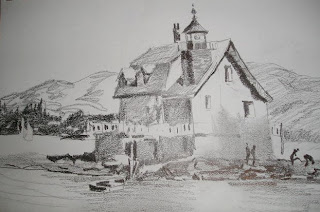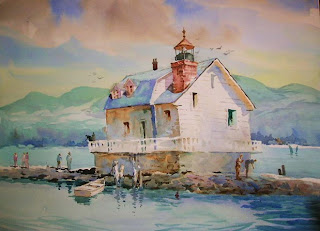

Keeping a sketchbook handy is a habit that can aid the painting process. It's the place where I work out many of the kinks before I get my brushes out. Sketching is like brainstorming. Values, placement, size, lighting, and elimination of unnecessary elements are worked out ahead of time.
A sketch is not a drawing. Drawing strives for accuracy of line and many times details that don't necessarily involve compositional considerations. A sketch is looser and freer than a drawing and is not concerned with being a finished work of art. It is a plan of action.
Here is the sketch and the resulting painting of the lighthouse in Rockland, Maine.


















